We grew up too fast, didn’t we?
I still remember the days when I asked my mother why the hyenas were willing to work for Scar. Also, I will never forget Arthur’s reggae song with the character walking down the sidewalk.
A journey into the past, whether in the form of a cherished cartoon, an old box-office hit, or even a retro image, has the ability to make us stop dead in our tracks and smile.
Like our future, we give regular attention to our past, the days that served us well. And it’s little surprise that the allure of good old memories is stronger now than ever in an era filled with mounting dread.
Nostalgia has a powerful hold on us.
And it really has become the curse of our age. In fact, we find it so satisfying when a brand mentions a thing or two about the past we grew up in.
This got me thinking – why reminiscing helps us feel better and become more hopeful about the future. Why we are willing to pay more when companies incorporate nostalgia into their marketing campaigns? Let’s jump in on the reasoning.
Consumer Behavior & Nostalgia
Weirdly, nostalgia was first classified as a psychiatric disorder; psychologists labelled it as an easy route to escape the present. But recent research shows how it positively impacts an individual’s behavior. The nostalgia experiments published in The Journal of Experimental Social Psychology by Wijnand Van Tilburg revealed that nostalgic memories may provide people a sense of belonging and meaning that drives optimism and creativity.
To understand why nostalgia has this impact on human behavior, we need to consider its impact on our brain. According to a research titled “The Neurobiology of Nostalgia: A Story of Memory, Emotion, and the Self”, memory is connected to the brain’s cortical regions, mainly parietal and prefrontal cortical areas (taking part in episodic memory retrieval) and the left prefrontal cortex (taking part in episodic memory formation).
However, emotions determine the final part of the equation, even if there is no memory formation. The above scenario is related to the brain structure called hippocampus, which enables us to revisit old information. It’s the C-shaped region of the brain which connects to amygdala, the emotional section of the brain. These two structures then work together and process information from something nostalgic, making the experience intertwined with feelings of the past.
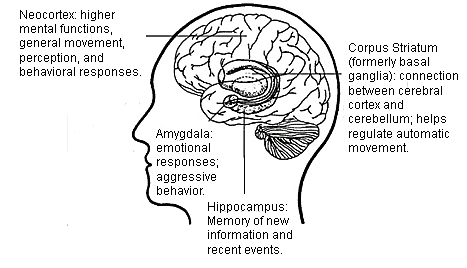 In terms of consumer behavior, the brain takes nostalgia as part of preference during the evaluation of items and experiences. Nostalgic branding/marketing simulates amygdala and hippocampus, thereby having a direct effect on exploratory tendencies of the consumer, that is on variety-seeking and action taking. The scenario provides brands the opportunity to enjoy more conversions.
In terms of consumer behavior, the brain takes nostalgia as part of preference during the evaluation of items and experiences. Nostalgic branding/marketing simulates amygdala and hippocampus, thereby having a direct effect on exploratory tendencies of the consumer, that is on variety-seeking and action taking. The scenario provides brands the opportunity to enjoy more conversions.
Nostalgic Marketing & Its Impact
The desire to create and maintain social bonds is one of the most significant consumer motivators. According to nostalgia specialist Jannine LaSaleta, nostalgia leads to feelings of social connectedness which enables people to spend more freely. LeSaleta’s research implied that there may be a positive correlation between nostalgia and the amount people are willing to spend on products/services that evoked remembrance.
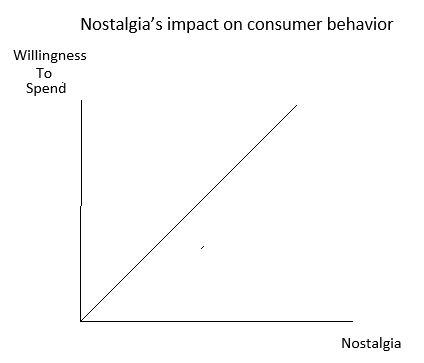
Marketers are also leveraging the fact that they can play the nostalgia card to:
- Appeal to two or more demographics at once (boomers, millennials, etc.)
- Personalize an advertisement or marketing experience
- Hone in on events that their target audience remembers or experienced
- Trigger an emotional response through sensory inputs (smelling a scent, seeing a childhood image, etc.)
- Reignite company conversions through an “old” or “forgotten” product/service
As a result, companies can tap into a consumer’s fondest memories and use the positive feelings experienced to encourage desired reactions.
Examples
Nostalgia presents an opportunity to mashup old with the new to grab consumer attention and inspire action of buying. Still need convincing? Below are examples where nostalgia was the key to higher conversions.
- Vinyl Records
Music retailers in 2014 didn’t shy away from trading vinyl records, which is a niche but growing market. The personality driven retro products are becoming the conversion gateway for music stores amid the increasing trend towards online music download and streaming. Customers include long-term collectors and people feeling nostalgic towards records they threw out when CDs became mainstream.
Artists made a major contribution to overall vinyl records sales, which reached a record high of $9.2 million in 2014, a 52 percent increase over 2013 when the figure was reported at $6.1 million. Vinyl records accounted for 3.6 percent of all album sales last year.
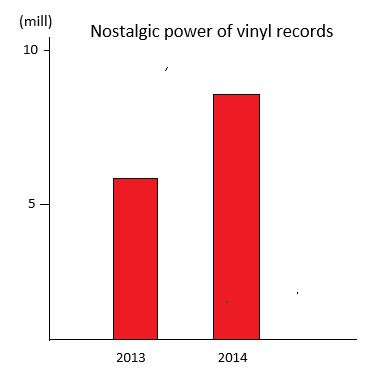 Jack White’s album “Lazaretto” highlighted the nostalgic power of vinyl records last year. 40,000 LP copies were shifted in the first week of release, and the album was reported to be selling 2,000 copies per week. The figure was more than the sale figure of any release since two decades, a mammoth increase in release-to-sale conversion.
Jack White’s album “Lazaretto” highlighted the nostalgic power of vinyl records last year. 40,000 LP copies were shifted in the first week of release, and the album was reported to be selling 2,000 copies per week. The figure was more than the sale figure of any release since two decades, a mammoth increase in release-to-sale conversion.
- Blue Velvet Vintage
This web store offers mid-century clothing such as swimwear, dresses, suits and separates. Retro style outfits are also available for different occasions. Theresa Campbell McKee launched this business in 2002 via eBay, before transitioning to a custom web store.
McKee kept costs down with online commerce and reached customers in far off countries such as Australia and Russia. The business provided vintage clothing lovers an opportunity to find that perfect “50s prom dress” without braving the throngs in retro retail outlets.
Interest came from the demographic who related the brand’s offerings to the fashion and lifestyle portrayed in shows like HBO’s Boardwalk Empire and AMC’s Mad Men. The brand, as a result, is well-positioned to reach an audience of shoppers who want to feel nostalgic through the apparel they wear. McKee used her brand’s vintage image to convert prospects into buyers while nostalgia gave her business an edge over other retailers.
According to Terapeak Trends, nearly 32.5 million retro or vintage items were sold on eBay last year.
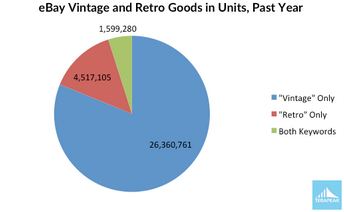 The number indicates that retro and vintage continues to be a big business on the web. Retailers like Blue Velvet Vintage will give themselves a chance to improve conversions by reflecting nostalgia for products from other periods. To the audience, these brands create and foster meaning.
The number indicates that retro and vintage continues to be a big business on the web. Retailers like Blue Velvet Vintage will give themselves a chance to improve conversions by reflecting nostalgia for products from other periods. To the audience, these brands create and foster meaning.
- Miller Lite
Miller Lite found it difficult to revive sales with consumption shifting away from mass-market beers and rising in the favor of craft beer as well as liquor and wine. However, they have managed to increase sales last year.
To revive sales of left-behind brands, manufacturers toyed with all possible innovations of can design. Miller however found success by promoting Lite in 70s retro style white packaging with the original design and logo.
Chief Marketing Officer at MillerCoors Andy England revealed to AdAge that this style of packaging was popular with boomers as it brings back great memories and they remember it, while it promotes authenticity in the millennial demographic, which is the key to appeal to the latter.
Miller Lite managed to sell 32 million more cans last year than it had by that time in 2013.
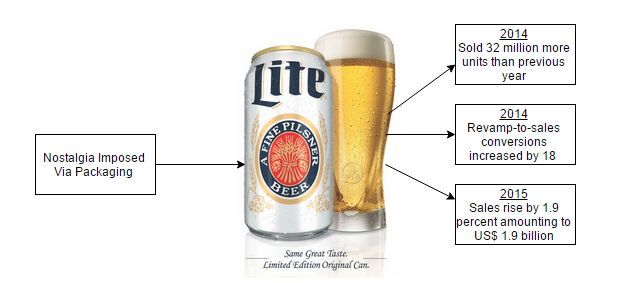 And white can revamp-to-sale conversions were reported to have increased by as much as 18 percent in some markets. In 2015, sales were reported to have increased by 1.9 percent to $1.9 billion.
And white can revamp-to-sale conversions were reported to have increased by as much as 18 percent in some markets. In 2015, sales were reported to have increased by 1.9 percent to $1.9 billion.
Nostalgia in B2B
Improving conversion rates has been a long-time challenge for B2B companies. It’s hard to make people take the desired action in the B2B industry; most of them don’t react to old-school CRO strategies and avoid cold calls like the plague. And there’s this problem with all the B2B marketing tools: technology lacks strategy.
According to WordStream’s analysis of B2B conversion rates (on Google Adwords accounts), the average conversion rate was just 2.23 percent for B2B advertisers. Capterra’s post on B2B software conversions reported a higher average, but said that it is important to analyze conversion rates at each stage of the process.
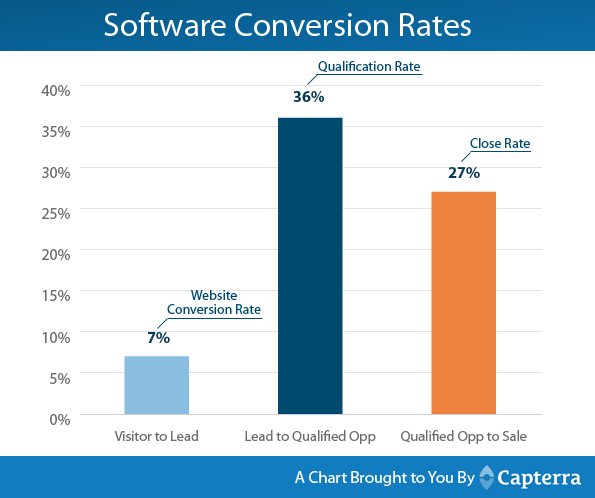 Top-of-funnel visitors are a challenge to convert compared to the ones farther along; 7 percent of website traffic will convert to a lead, compared to 36 percent of the leads that were then qualified as sales-ready.
Top-of-funnel visitors are a challenge to convert compared to the ones farther along; 7 percent of website traffic will convert to a lead, compared to 36 percent of the leads that were then qualified as sales-ready.
MarketingSherpa reported that when B2B leads are first generated, only 27 percent of them will be sales ready. If they aren’t nurtured with a strong strategy during the process, conversion rates may precipitously drop. Nurturing will be required to keep qualified prospects in the pipeline, retaining their interest and providing them reasons to proceed with the purchase.
Speaking of nurturing, nostalgia can help B2B marketers relate their products to the world which no longer exists yet which leads can identify with. As B2C businesses play to their audiences’ love of memorable reference, B2B businesses should take notice.
Nostalgia can also be used by B2B brands to influence buyer emotions, which have a significant impact on B2B purchases according to a report. 71 percent of buyers who find personal value in a B2B product will continue with the purchase.
Kapost’s infographic backs up the claim. Imagine the impact you could have on conversions.
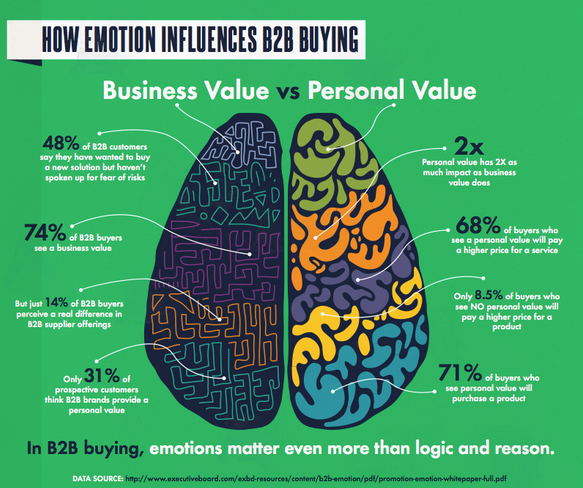 This shouldn’t come as a surprise considering we’ve already discussed how people are more inclined to buy from a brand that appeals to the emotional center of their brain than their rational center only. Therefore, no matter how much B2B buyers try to put their “corporate” hat on, the fact remains that they are just “people” who will allow their personal feelings to influence their purchase decisions.
This shouldn’t come as a surprise considering we’ve already discussed how people are more inclined to buy from a brand that appeals to the emotional center of their brain than their rational center only. Therefore, no matter how much B2B buyers try to put their “corporate” hat on, the fact remains that they are just “people” who will allow their personal feelings to influence their purchase decisions.
Nostalgia Marketing Tips for B2B Companies
If a B2B marketing strategy manages to create sense of belonging and good memories, leads can be kept in the pipeline for more chances of conversions. Below are some tips for B2B companies to leverage nostalgia while attempting to improve conversions.
- Be Authentic
The most successful B2B campaigns have originality at their core. In this increasingly competitive environment, buyers seek authenticity. Some of them will look at archived software folders and wonder if they could have the initial simplicity ever again. It’s a good opportunity to leverage nostalgia to appeal to them.
You can do this by analyzing:
- What elements of your product/service stood the test of time
- What still captivates your target audience
- What commands attention
Your capability of being authentic will impact your conversion rate. Olapic’s commerce whitepaper revealed that authentic visuals had a higher conversion rate than visuals that lacked authenticity.
Remember this nostalgic video of the Internet Explorer?
Microsoft tried to showcase authenticity by retaining some original elements of the browser’s initial branding (the logo and layout for example). Even though the Internet Explorer isn’t perfect and the video might not have converted users of other browsers on a large scale, it was able to remind them about the good old days while encouraging new internet users to try out the browser.
- Make the Old New Again
Reintroducing a product/service that was discontinued is another way to use nostalgia. In some instances, a relaunch/revamp/refresh might be the only thing you need to improve your conversions.
However before anything else, you should assess who your product/service is for and the role it plays in people’s lives. The driving force behind a revamp would be the nostalgia effect to gain better market positioning this time around.
You can assess how the audience will respond to a particular relaunch through
- Surveys
- Questionnaires
- Interviews
- Etc.
Revitalization will become an outward expression of your brand’s evolution while enabling you to see fascinated customers in the pipeline. Conversions could increase when people are impressed with ‘what’s new’ in the old.
For instance, iFixit was initially a platform to sell old electronics and gadgets, but later relaunched their brand on the concept of bringing electronics back from the dead.
Realizing that consumers just can’t keep throwing gadgets away after a few months of use, they revitalized the brand by offering consumers a chance to get every last bit of functionality left in their device. The relaunch was a major factor behind higher conversions and sales later on.
- Capitalize on Cultural Trends
The best way to use nostalgia is not to force it, but let it be organic. This can be done by keeping yourself updated on cultural trends and tapping into them. The aim is to merge “what was” with “what is now”.
For example, 90s nostalgia has been big for the last few years, and it’s not just B2C brands that have capitalized on that trend. National holidays could also be leveraged for inciting communal nostalgia. Also, it can be a good idea to create modern-day versions of throwback values.
Social Media Management firm Sprinklr published a blog post titled “What Brands Need to Know about the Evolution of Social Media”. It has nostalgia infused inside the content as well as the cited infographic.
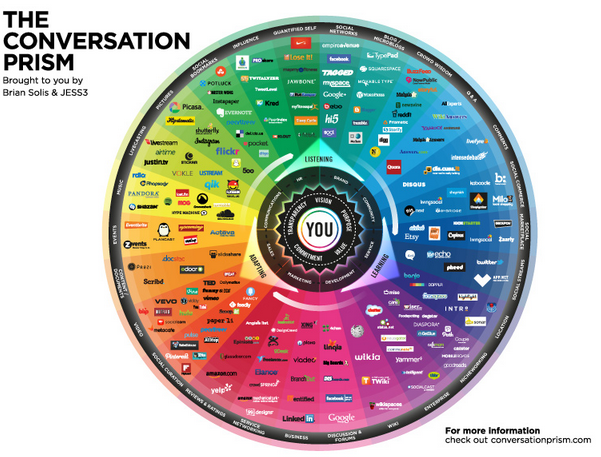 Such content can spark interest in a brand. Sprinklr recently joined the billion dollar club, a sign that they’re experiencing high marketing-to-sales and pitching-to-funding conversions.
Such content can spark interest in a brand. Sprinklr recently joined the billion dollar club, a sign that they’re experiencing high marketing-to-sales and pitching-to-funding conversions.
Final Thoughts
Forward-thinking marketers and CRO specialists will seek out even the slightest opportunity to increase conversions. While nostalgia may not always have a major impact on conversions, it can increase the payout of your efforts by driving feelings of joy and emotion. And the point is that it’s almost impossible to ignore nostalgia.
Have you ever thought of harking back to the past with your marketing approach? What are your thoughts? I’d love to hear them email me Slavav @ stratablue.com




